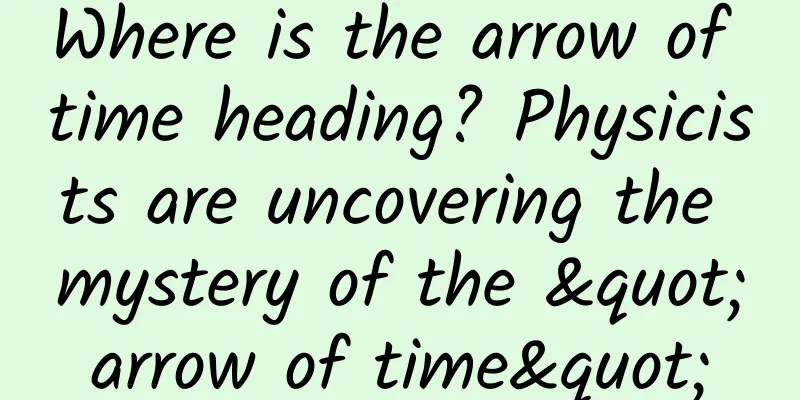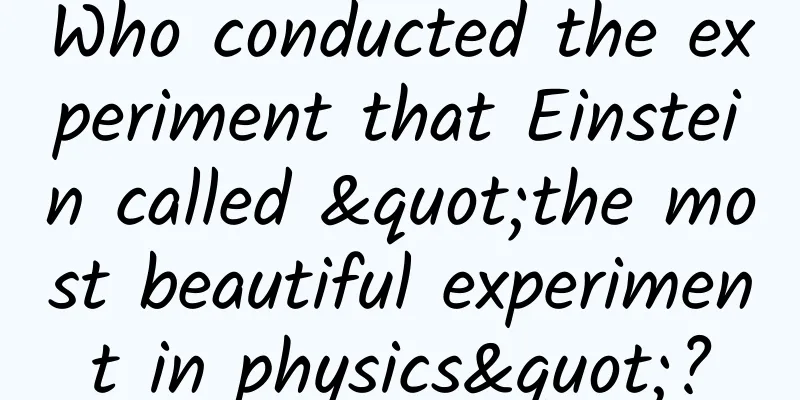Where is the arrow of time heading? Physicists are uncovering the mystery of the "arrow of time"

|
So far, people's understanding of time has always been in only one direction, that is, everything from the past to the future, including life, always grows up slowly from childhood, from youth to middle age, and then gradually ages. This seems to be a fixed law. However, behind this phenomenon, there is a complex and profound physics problem - "time arrow". The so-called "time arrow" refers to the single direction of time flow, that is, social development from the past to the future, and will not flow back to the past. This is an extremely basic phenomenon in nature. The existence of a time arrow with a clear direction only stays at the macroscopic level, while at the microscopic level, physical time is almost completely symmetrical. In layman's terms, as the scale decreases, the probability of an event occurring in the reverse direction gradually approaches the probability of an event occurring in the forward direction. When the scale is very small, physicists believe that the two are approximately equal, that is, time is symmetrical, and there is no "past" and "future". For example, if gravity is symmetrical, you can reverse the orbit of a planet around the sun, and this path will still conform to the law of universal gravitation. Most physical laws have assumptions similar to gravitational symmetry, but the situation with the arrow of time is different. Imagine if time was also symmetrical at the macroscopic level, then you could play a shot of a movie in reverse and understand what happened, but this is not the case. Physicists have defined time from a more basic level, and the consensus is that the arrow of time is a derivative of the second law of thermodynamics, the famous "entropy increase theorem", that is, with the passage of time, the degree of disorder of any material system is always increasing, and the higher the degree of disorder of the system, the more difficult it is to return to the previous ordered state, and the more significant the "arrow of time" is. Therefore, physicists concluded that matter in this universe always develops in a disordered direction, making people feel that time flows in only one direction. Recently, physicists have made some exciting progress in their research on unraveling the mystery of the "arrow of time". On June 24, a research result was published in the international academic journal Physical Review Letters. Christopher Lynn, one of the main authors of the paper and a postdoctoral researcher at the Center for Theoretical Science Research at the City University of New York, said that this new research involves the smallest components of the material world, including particles, atoms, molecules, and the most basic unit cells of life. They tried to explain the origin of the arrow of time by deeply exploring these microscopic interactions. The researchers first explored how to decompose the arrow of time by looking at specific building blocks within the system and the interactions between them. "The analysis showed that in both video experiments, the arrow of time emerged from blocks of two neurons, with no more complex block structures observed," the study said. A key focus of their research is to delve into the behavior of particles at the microscopic scale. One of the questions they are concerned about is whether the interactions between particles at the microscopic scale can help explain the arrow of time. One important idea is that the arrow of time may be related to the asymmetry when particles collide. This means that during a collision, particles are more likely to be scattered in a certain direction than to collide in the opposite way. This microscopic asymmetry may accumulate on a macroscopic scale, forming the direction of the arrow of time. Another finding was even more surprising to the researchers: the retina of the subjects who watched the video of randomly moving objects showed a higher directionality of time. Researcher Lin En said that this discovery challenges the cognition of how the internal part of an organism is consistent with the external world. Researchers in the field of neuroscience may be very interested in these findings. David Schwab, professor of physics and biology, another lead researcher on the study, believes that the theory of decomposing the arrow of time is an ingenious and universal theoretical framework that provides an innovative idea for exploring many systems with multi-dimensional space and that have not reached equilibrium. Lin En concluded that our study has taken the first step towards understanding how the arrow of time we experience in our daily lives is reflected in the microscopic world. Although their research has made some progress, fully solving the mystery of the arrow of time remains a complex and profound problem that requires collaboration across multiple disciplines, including physics, chemistry, biology, and philosophy. Understanding the nature of the arrow of time will help us understand the natural world more deeply and provide new directions for future scientific research and technological development. (The author Chen Sijin is a science fiction writer) |
<<: It’s the same three meals a day, why do you get sick from eating so much?
>>: The eel in eel rice hides a secret that has troubled humans for thousands of years
Recommend
Many people are wrong! Garlic scapes vs. garlic sprouts, which one is right?
The Chinese names of plants are like refined code...
An unfinished product promotion plan, with my latest thoughts on product operations
For confidentiality reasons, the specific content...
First-line optimizer teaches you how to do "search advertising" from 0 to 1
There are many differences between " search ...
In-depth analysis of Pinduoduo's fission activities
Everyone knows that Pinduoduo has done a great jo...
Things to note when renovating kitchen and bathroom in Lanzhou: if you are not careful, the renovation will only make things worse.
Since the kitchen and bathroom are being renovate...
Go to Jiangxi and see Poyang Lake!
China Thousands of lakes But there is a big lake ...
Detailed explanation of Apple Developer Conference: What are the stories behind iOS 14? Why launch self-developed chips now?
In the early morning of June 23rd, Beijing time, ...
Are those extremely low-level information flow ads really effective?
The online game advertisement mentioned by the to...
iOS multithreaded development: several details that are easily overlooked
Generally speaking, iOS developers can handle mos...
If used properly, it can save lives; if used improperly, it can be fatal. What exactly is "adrenaline"?
When the human body is frightened, feels threaten...
Comparison of Flutter and React Native for mobile development
【51CTO.com Quick Translation】Just a few years ago...
How to plan a successful vulnerability marketing event?
Loophole marketing , as the name suggests, is a m...
User segmentation and positioning for brand marketing!
I think digitalization is the right time, the rig...
Users are expensive, channels are expensive, promotion is expensive...How should we operate?
In the era of super users , if I had to sum it up...
Dapeng M2: All-in-one is the future of VR
Oculus founder Palmer Luckey once made it clear t...









